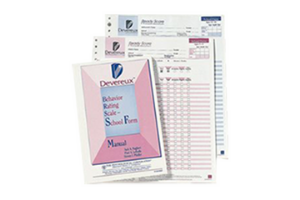Author:
Jack A. Naglieri, PhD, Paul A. LeBuffe, Steven I. Pfeiffer, PhD, ABPP
Overview:
Detect severe emotional disturbances in students
Age Range:
5:0 - 18:0
RTI Tiers:
RTI Levels 2 and 3
Completion Time:
5 minutes
Norms:
Separate by age and sex for both parent and teacher raters
Use this fast and versatile tool for identifying behaviors that may indicate severe emotional disturbances in children and adolescents. The Devereux Behavior Rating Scale—School Formis based on federal criteria and can be used by educators, psychologists, guidance counselors, and other assessment professionals.
Use this instrument to:
- Evaluate the existence of behaviors indicating severe emotional disturbance
- Provide normative comparisons of behaviors
- Compare results across informants (e.g., teachers, parents)
- Assess an individual in a variety of settings
- Provide information for treatment planning
- Evaluate treatment effectiveness as a pre/post measure.
The 40-item scale is especially effective used in conjunction with other findings to monitor and evaluate progress during educational interventions, or to determine whether a seriously emotionally disturbed child or adolescent should be placed in a special education program
Child and Adolescent Versions
Two forms feature separate sets of items appropriate for children (5 through 12 years) and adolescents (13 through 18 years).
Four Subtests
The four subscales address the individual areas identified in the federal definition of Serious Emotional Disturbance. These are Interpersonal Problems, Inappropriate Behaviors/Feelings, Depression, and Physical Symptoms/Fears.
Nationally Standardized
The Devereux School Formmeets the most current professional standards for psychological assessment instruments with:
- National standardization sample of more than 3,000 cases
- Sample closely approximating the 1990 Census data on all demographic variables
- Separate norms for males and females for both parent and teacher raters
- Extensive validity and reliability data
- Easy administration, scoring, and interpretation instructions
- Items and directions written at the sixth grade reading level
Multilevel Analysis and Interpretation
- Total Scale Score and Subscale Scores assist in eligibility determination
- Subscale Scores facilitate IEP development and preferred intervention design
- Problem Item Scores help identify specific problem behaviors for treatment





